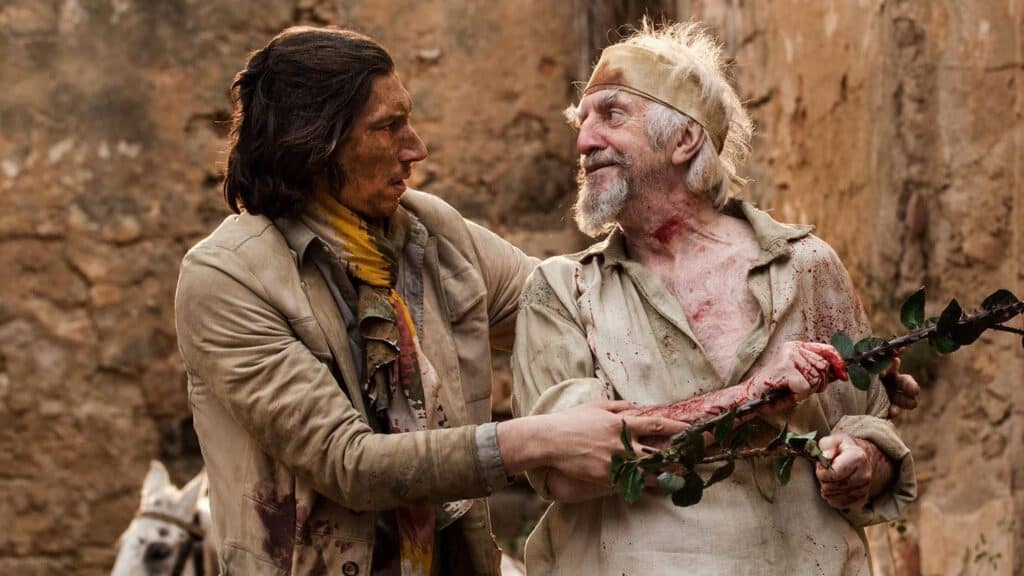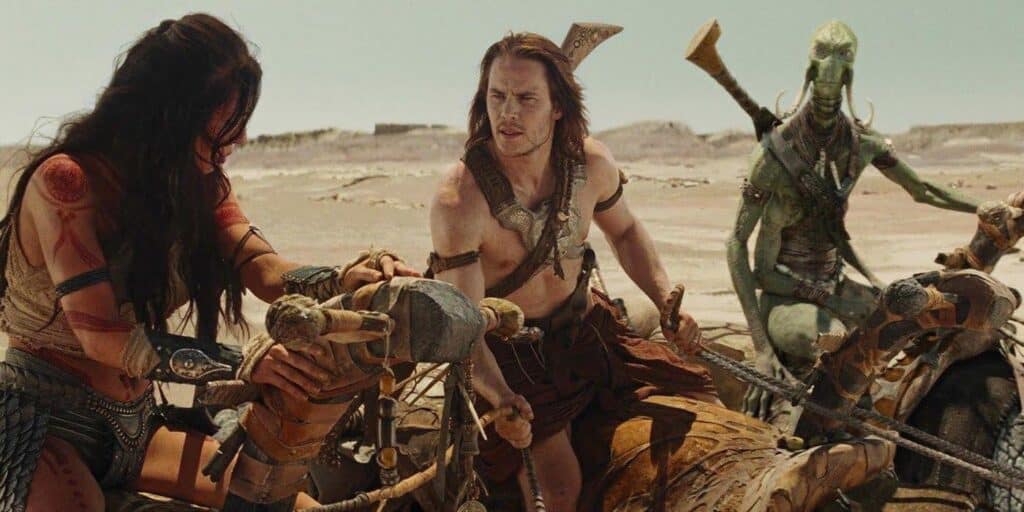
Countless phrases are thrown around in the film world, but few carry as much mystery, hope, and frustration as ‘in development’. But what does it actually mean when someone says a film is ‘in development’? Is there a script? A director involved? Is the movie even real yet?
In today’s blog, we’ll be pulling back the curtain on what it means for a movie to be ‘in development’, who’s involved, and what happens during this early but vital stage in the film production process.
We’ll also have a look at the common pitfalls of the development stage as well as tools to help you navigate the development of your next film as best you possibly can.
So, let’s not leave this article ‘in development’ any longer, and get on with it!
“Making films is about having absolute and foolish confidence; the challenge for all of us is to have the heart of a poet and the skin of an elephant.” – Mira Nair
Table of Contents
- What Does “In Development” Mean in Film?
- What Happens During Development?
- Who’s Involved in the Development Stage?
- Development vs. Pre-Production: What’s the Difference?
- Development Challenges and Pitfalls
- Tools That Help During Development
- Conclusion
What Does “In Development” Mean in Film?
When a film is described as ‘in development’, it simply means the project is in its earliest, pre-production phase.
At the development stage, an idea is being shaped and positioned for production. This doesn’t mean the project has been greenlit, however. While all the work can be done to prepare a movie for production, it’s not guaranteed to be made at this stage.

Development will typically start with a concept, screenplay, or an optioned book or article. From there, it involves multiple creative, legal, and financial processes to assess how viable the project actually is. Now’s the time for all the ‘what ifs’ to be explored.
So, why does the development phase matter? Well, it sets the tone for everything else that follows. Good development creates a compelling, well-packaged project that has a real shot at being financed, attracting talent, and moving forward into production.
What Happens During Development?
There are a few stages to development which span different areas of film production. Let’s explore some of those now.
Rewrites
Even if a script starts strong, it rarely remains unchanged. That’s where script rewrites come in as one of the main tasks in development.
Writers may go through multiple drafts, sometimes with input from producers, directors, or even studio executives.
These rewrites will focus on:
- Pacing and structure
- Character development
- Dialogue
- Marketability or genre adjustments
Often, different writers are brought on board to provide different perspectives on the script. The result? A significant change in tone, style, or even the story’s core elements.
After all, filmmaking is a business, and the movie needs to align with the current market and audience tastes. It all starts with the screenplay.

Assembling a Team
Once the script starts taking shape, producers begin assembling key personnel, such as:
- Producers to oversee the development and spearhead the project
- Line producers to help assess a project’s feasibility and estimate costs
- A director to help refine the film’s tone, vision, and casting choices
- Principal actors to boost interest and funding (final casting will happen later)
Rights and Clearances
Development often means needing to secure rights, especially if the project is based on an existing IP (intellectual property) such as books, articles, songs, or historical events.
Rights must always be negotiated and legally cleared, sometimes through option agreements which give producers a fixed time to move the project forward.
You may find you’ll need to look at other legal aspects, such as:
- Life rights (if your movie is based on a real person)
- Music rights (if your movie relies upon specific songs)
- Location rights or permissions
Budget Development
Development is the stage where the budget begins to take shape. This early on, the budget is usually speculative, but this doesn’t mean it shouldn’t be any less thorough.
Filmmakers will outline:
- Projected cost of production
- Talent fees
- Post-production estimates
- Distribution and marketing costs

Of course, the size and scale of a project will determine the budget and whether it’s pitched as an indie project or studio feature. Either way, a solid early budget is crucial for pitching a film to financiers and backers.
For more on how to put your film budget together, we have just the blog for you. Click here to check it out!
Pitch Decks and Lookbooks
To visually and emotionally sell a project, teams will create pitch decks or look books. These are both types of presentation tools that show:
- The story
- Characters
- Visual tone (using references or art)
- Comparisons (e.g. Get Out meets Hereditary)
- Bios of key players attached to the project
- Budget range and production plans
An exciting and interesting deck can be the difference between a pass and a greenlight.
“Movies don’t have to impress everyone the moment that it drops. Stuff can take its time to find its audience.” – Cathy Yan
Plan every production step with confidence — start your next project in Celtx
Who’s Involved in the Development Stage?
As the development stages we just explored span many departments, there are also a whole host of people and roles who help pull everything together.
Writers
At the heart of development is the writer (of course!) who is the originator of the script or concept. The writer may be involved throughout development, but can sometimes be replaced, depending on the creative direction or contractual terms of the production.
When it comes to adaptations, the original author may also consult or collaborate on the movie. This was the case when Warner Bros. took on the Harry Potter movie franchise in the late 90s. JK Rowling consulted on the films before becoming a producer later.

Producers
Producers head the project, with many responsibilities to ensure all stages of production run smoothly. These responsibilities include:
- Optioning material
- Securing rights
- Hiring writers
- Attaching directors
- Seeking financing
- Guiding the project creatively and logistically
In many ways, the ‘in development’ stage is very much the producer’s domain.
Executives and Financiers
Studio executives, independent financiers, or streaming platform representatives may enter the picture, even during the early development stages. Why? Well, they:
- Evaluate the script’s potential
- Assess commercial appeal
- Offer development funding and feedback
- Make the final decision on whether to greenlight a project.
Legal
Development is full of legal landmines which explains the need for entertainment lawyers. They’re often involved from the start of the development process, ready to advise on all negotiations.
These negotiations usually encompass:
- Optioning and purchasing agreements
- Talent deals
- Rights acquisitioning
- NDAs and partnership agreements

If each of these negotiations aren’t handled properly, it can lead to legal mistakes which in turn can cause delays. It can even kill a project later on!
For all the nitty gritty of the film industry, we highly recommend listening to the ScreenSkills podcast. Each episode, they breakdown a key element of production and how to make the best of it!
Development vs. Pre-Production: What’s the Difference?
Development and pre-production do sound similar. It is very easy to confuse the two, but they are very distinct stages in the filmmaking process.
Let’s compare them:
| Development | Pre-Production |
| Writing and rewriting the script | Finalizing the shooting script |
| Assembling the creative team | Hiring full crew |
| Seeking funding | Detailed scheduling and budgeting |
| Creating pitch decks | Scouting locations |
| Attaching talent and directors | Finalizing casting |
| Legal clearances | Permits and insurance |
In short, once a project has been greenlit (has secured finding and a commitment to move forward) following development, it then moves onto the pre-production phase.
Take a deep dive into pre-production with our dedicated blog post What is Pre-Production in Film!
Development Challenges and Pitfalls
As with all types of creative projects, filmmakers do face issues that need to be resolved throughout the production process.
Next, we’re going to explore some of these challenges, so you can avoid and/or plan for them when it comes to planning your own project.
Development Hell
A project stuck in the development phase or years (or even decades) is said to be in development hell. Causes include:
- Endless rewrites
- Shifting creative visions
- Changing studio priorities
- Legal issues
- Budget concerns
Unfortunately, many promising films never escape development hell. Even projects like The Man Who Killed Don Quixote and Akira spent decades bouncing between producers, writers, and directors before reaching production.

Optioning Rights
Optioning gives producers a temporary right to develop a project based on an existing IP. But if development stalls, the option can expire, and rights revert to the original owner.
This can derail years of work if the producer cannot renew the option or raise funding in time for the project to be greenlit.
Producer Aimee Peyronnet and FilmFour optioned the rights for the film adaptation of The Lovely Bones in the early 2000s. However, after a failed financing attempt, the rights lapsed, and the project was taken over by another production team. They were luckily able to secure the funding.
Eventually, the film was released in 2009, directed by Peter Jackson.

Budget Stall-Outs
Early development budgets are often built on assumptions. If the budget becomes too high or financing falls through, a project can stall. On the other hand, while an underestimated budget may attract initial interest, but it could hit a wall later when actual costs surface.
This was the case with John Carter. With decades of development under its belt and multiple directors including Robert Rodriguez and Jon Favreau, it meant its early budgets ballooned, and technology costs changed drastically.
When the project finally landed with Disney, they spent over $250 million producing it, making it one of the most expensive films ever made. The worst part is it flopped at the box office.

There are hundreds if not thousands of films in development at any one time. Find out what’s hot in Hollywood with this IMDb list.
Keep your cast, crew, and assets organized with Celtx’s all-in-one production tools.
Click here to start your free trial
Tools That Help During Development
Filmmaking is a machine with many moving parts, so it’s natural for us to need a helping hand along the way. There are some fantastic tools out there to help streamline your production, saving you both time and money.
Check out some of our favorites:
1. Celtx
Okay, it’s time for us to blow our own trumpets! But hear us out, because Celtx is actually a popular software platform for scriptwriting and production planning.
Our comprehensive set of tools allow you to:
- Write and revise scripts collaboratively
- Create breakdowns and shot lists
- Catalog characters and locations
- Track revisions and feedback
We’re cloud-based which means we’re a great resource for early collaboration among geographically dispersed teams.
2. Beat Sheets
These are structural outlines that break a story into its major narrative beats. They can be extremely useful for:
- Clarifying story arcs
- Pitching structures to executives
- Keeping rewrites focused
Whether you decide to use the Save the Cat model or The Hero’s Journey, a solid beat sheet keeps the creative process on track and aligned with audience expectations.
We even have our own beat sheet feature in Celtx! Discover it here.
Conclusion
The phrase “in development” might sound vague, but behind it lies an intense, structured, and often unpredictable process. Development is where a film is born, not just creatively, but strategically. It’s where scripts are refined, teams assembled, rights secured, and visions clarified.
While it can be a time of great inspiration, development is also where many projects stall. It demands patience, persistence, and planning. But for those who navigate it well, development lays the groundwork for a successful production, and ultimately, a film that reaches its audience.
So, the next time you hear a film is “in development,” know this: It’s not just an idea, but a work in progress, slowly shaping into something that might just make it to the big screen.
Ready to bring your script to life? Build your next production in Celtx.
Start for free
Up Next:

What is a Script Supervisor?
Once you’re in production, every details counts. A script supervisor ensures your shoot stays consistent, aligned, and ready for post—learn how they do it.
